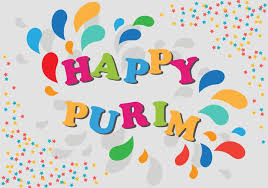There are several really good takeaways from Esther, so many that they can’t be covered in one article let alone three or four. We can, however, set the stage for your personal reading and study. 
Purim is Hebrew for “casting lots” – which is what a man named Haman did to choose the day when all of the Jewish people in Babylonia would be killed. On that fateful day the Jewish people would not be allowed to defend themselves to make it easier to commit genocide.
But the tables were turned. God protected the people. God’s protection is celebrated by Jews every year at Purim. One interesting aspect of Book of Esther is that it never mentions God. But you can see the hand of God working throughout the book.
And that’s important to remember when we go through times when we wonder, “where is God in all of this?” He is in fact at work even when we think He is not. What He expects of us is that we remain faithful to what we are tasked to do so that we can be used to accomplish His will.
In the Book of Esther, Esther and Mordecai take a risk, in faith, which allows the people to see God at work.
First, a backstory. Following the Exile, Jewish people started going back to Jerusalem about 516 BC. Some Jews, however, never returned to the land after the Babylonian Exile. At the time of Esther (which is about 485 BC to 477 BC) those who did not return to the land were subjects of the Persian Empire. In fact, the vast majority of the Jews living in Babylonia were born there, they liked it there, and in many ways they assimilated – although some did keep the faith.
In Chapter 1 of Esther, the king wants his queen, Vashti, to do something she should not do and he gets rid of her. The king is advised to replace her with the “winner” of three-year-long “beauty” pageant.
The one that won the king’s heart was Esther who, on the advice of her cousin Mordecai (who had adopted her and raised her) kept it a secret that she was Jewish. This was probably because Jewish people living in Babylon were a lower class of people, and if Esther revealed she was Jewish she might not be queen anymore.
Meanwhile, Mordecai hung out in front of the palace at the King’s gate. Shortly after Esther became Queen, Mordecai overheard two of the King’s chamberlains plotting to assassinate the king. Mordecai reported the plot to Esther, she warned the King and the two chamberlains were arrested and executed. Mordecai was not rewarded for saving the King.
An evil man named Haman was appointed Prime Minister. The king ordered everyone to bow down to Haman. Mordecai refused, which incensed Haman. Haman was so angry, so livid, and Haman hated “Mordecai-the-Jew” so much that he offered the King 10,000 silver talents to issue a decree to kill all of the Jews.
The King agreed and Haman cast lots to choose the 13th day of Adar for a coordinated one-day slaughter of all the Jews all across the king’s jurisdiction.
It was then that Mordecai convinced Esther that this was the time to reveal to the king that she was Jewish. Under the kings decree, Esther would be killed along with all of the other Jews because she was Jewish.
Esther asked Mordecai to call on all of the Jews in the land to fast for three days.
Esther invited the king and Haman to a feast. She told king that she had an important request to make, but at the feast she said she’d make the request at a second feast which was to be held the following day.
Following the first feast, Haman left and when he saw Mordecai standing in the king’s gate his anger overflowed. Once home, Haman’s family and advisors told him he should build gallows and get permission from the king to hang Mordecai.
While Haman was doing all that…
This has already been a longer than normal read. So, I’ll finish the story tomorrow and top it off with a couple of takeaways for you in today’s world.
May God bless you today as you are a blessing to Him.
–Chris